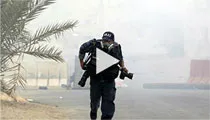Journalists felt the effect of widespread gang-related violence. The staff of the online news site El Faro faced intimidation after reporting on a criminal network involving businessmen and politicians, and after revealing secret negotiations between the government and gangs. Unidentified individuals followed and photographed El Faro’s journalists, Editor Carlos Dada said. Minister of Security David Munguía Payés acknowledged that the outlet was at risk but initially declined to provide any protection. The case also exposed cracks in solidarity among the Salvadoran press as few journalists initially came to the defense of El Faro. Nationwide, murder rates appeared to drop after the government negotiated a gang truce, although some officials suggested disappearances were simultaneously on the rise. Despite pervasive societal violence, the country has not seen widespread killings of journalists. The authorities, who won a conviction in May in the 2011 murder of a cameraman, have a generally good record in combating deadly anti-press violence, CPJ research shows.
El Salvador
» News site intimidated after reporting on secret government-gang talks.
» In a victory against impunity, prosecutors win conviction in journalist murder.
Journalists felt the effect of widespread gang-related violence. The staff of the online news site El Faro faced intimidation after reporting on a criminal network involving businessmen and politicians, and after revealing secret negotiations between the government and gangs. Unidentified individuals followed and photographed El Faro’s journalists, Editor Carlos Dada said. Minister of Security David Munguía Payés acknowledged that the outlet was at risk but initially declined to provide any protection. The case also exposed cracks in solidarity among the Salvadoran press as few journalists initially came to the defense of El Faro. Nationwide, murder rates appeared to drop after the government negotiated a gang truce, although some officials suggested disappearances were simultaneously on the rise. Despite pervasive societal violence, the country has not seen widespread killings of journalists. The authorities, who won a conviction in May in the 2011 murder of a cameraman, have a generally good record in combating deadly anti-press violence, CPJ research shows.
Three journalists have been killed since 1992 in direct retaliation for their reporting. Two more have been killed in unclear circumstances and CPJ continues to investigate.
67 percent
Suspected to have been committed by criminal groups67 percent
Victims who covered crimeA court found reputed gang member Jonathan Alexander Martínez Castro guilty of the 2011 murder of cameraman Alfredo Antonio Hurtado Núñez. The authorities said gang members targeted Hurtado because of his coverage of police anti-crime operations.
30
Years that Martínez was sentenced to prison1
Suspect in killing who remains at largeThe emergence of El Faro parallels a three-fold rise in Internet penetration over the past five years in the country, according to data from the International Telecommunication Union, or ITU.
El Faro revealed that 30 gang leaders were transferred to lower-security prisons as part of negotiations between the government and criminal gangs. The gang members agreed to ease their murderous practices in exchange for better prison conditions.

